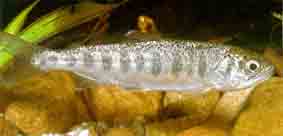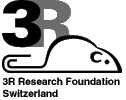
Figure 1: Bluegill sunfish (Lepomis macrochirus) are often used in bioassays including toxicity testing according to OECD guidelines.

Hans Rufli
ecotoxsolutions, 4058 Basel, Switzerland
rufli@ecotoxsolutions.com
Keywords: fish; ecotoxicology; data base; oecd-guideline; reduction; refinement
Duration: 1 year Project Completion: 2010
Background and Aim
(OECD Guideline 203), Fish Acute Toxicity Test, states that at least five concentrations in a geometric series with a separation factor preferably not exceeding 2.2 should be used and at least 7 fish per concentration. However, it is not uncommon in fish tests to find just one concentration with a partial mortality (mortality >0 and <100%), i.e., a very steep dose-effect relationship, and little information is gained from the multiple test concentrations with no or complete mortality. Based on this observation, it appears that the present design could be modified to reduce the number of fish whilst still providing the LC values with a precision comparable to the present design. It is the aim of this project to analyse historical data and to use the findings for alternative testing approaches with a reduced number of fish.
Method and Results
Historical data of acute fish toxicity tests of two substance groups (agrochemicals and non-agrochemicals) from a database of the chemical industry were analysed to characterise the distribution of LC50 values and slopes of the dose-effect relationship. In a second step, data from the OPP Pesticide Ecotoxicity Database were examined as supportive data. The results of the analysis of the two substance groups were compared. The findings were used in a computer simulation study, in which the performance of different experimental designs with reduced separation factors, smaller numbers of test concentrations, and smaller numbers of fish per test concentration were compared. The results of the simulations demonstrate the potential for improved experimental efficiency and reduction of animals without loss of quality in the LC50 estimate.
During a workshop, attendees applied their expert judgement to develop alternative designs to reduce the number of animals in testing.
The summarised results of the project are:
Conclusions and Relevance for 3R
The results of the project show ways of reducing the number of animals in the acute fish testing procedure. First by using 6 fish per concentration instead of at least 7 as stated in the Guideline. Secondly, by using juvenile fish only for a final confirmatory test whereas any previous tests are performed with fish embryos. In order to really save animals in practice, however, Guideline 203 has to be adapted and a lead country has to submit a Standard Project Submission Format to the OECD.
(see also 3R-INFO-BULLETIN Nr. 43)
References
1. Jeram S., Riego Sintes J.M., Halder M., Baraibar Fentanes J., Sokull-Klüttgen B., Hutchinson TH. (2005). A strategy to reduce the use of fish in acute ecotoxicity testing of new chemical substances notified in the European Union. Reg Tox Pharmacology 42: 218-224.
2. OECD Draft Proposal for a New Test Guideline on the 48h-Fish Embryo Toxicity Test (FET), May 30, 2006.
3. Rufli, H., Springer, T.A. (2011) Can We Reduce the Number of Fish in the OECD Acute Toxicity Test? Environ Toxicol Chem 30: 1006–1011.
Figures

Figure 1: Bluegill sunfish (Lepomis macrochirus) are often used in bioassays including toxicity testing according to OECD guidelines.